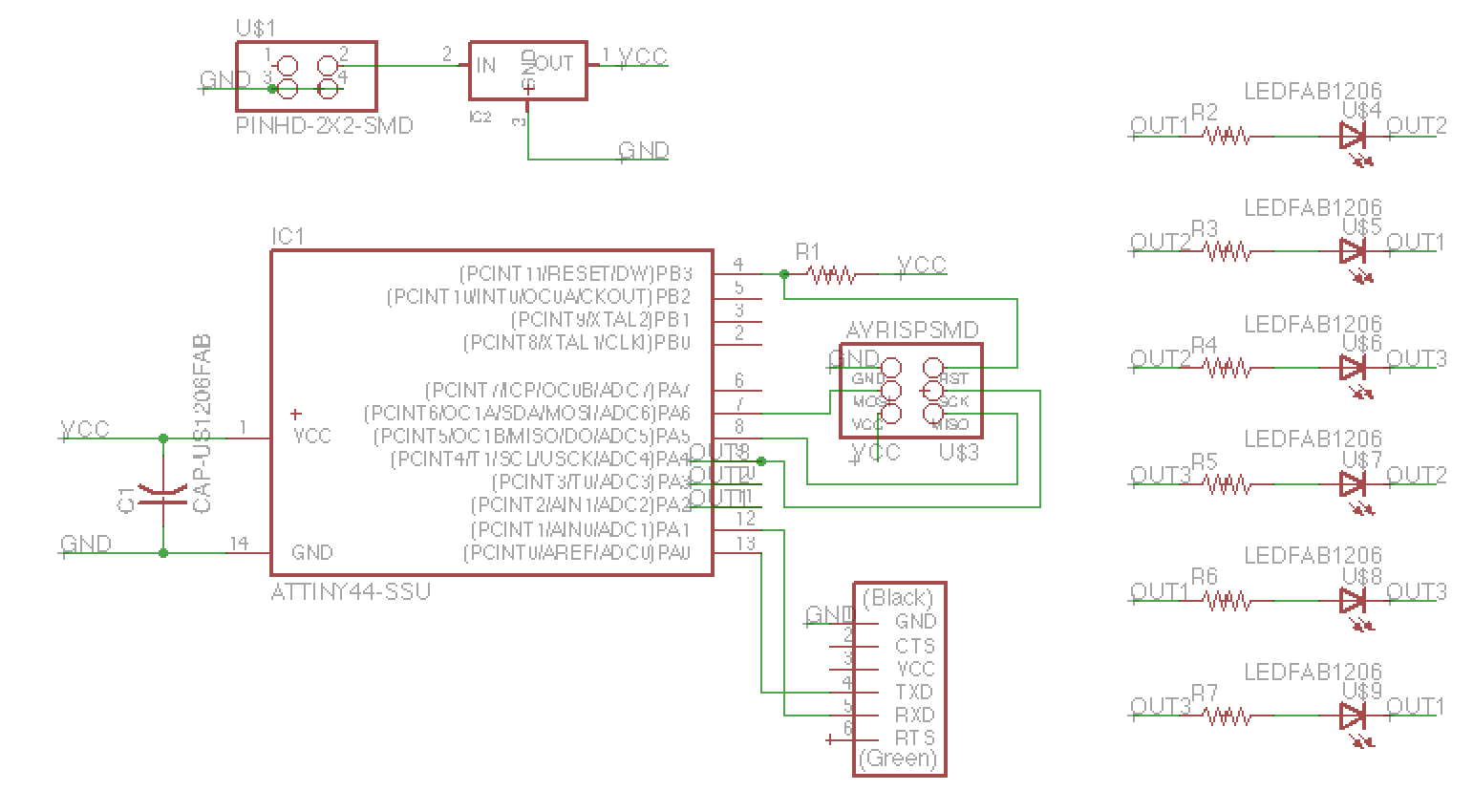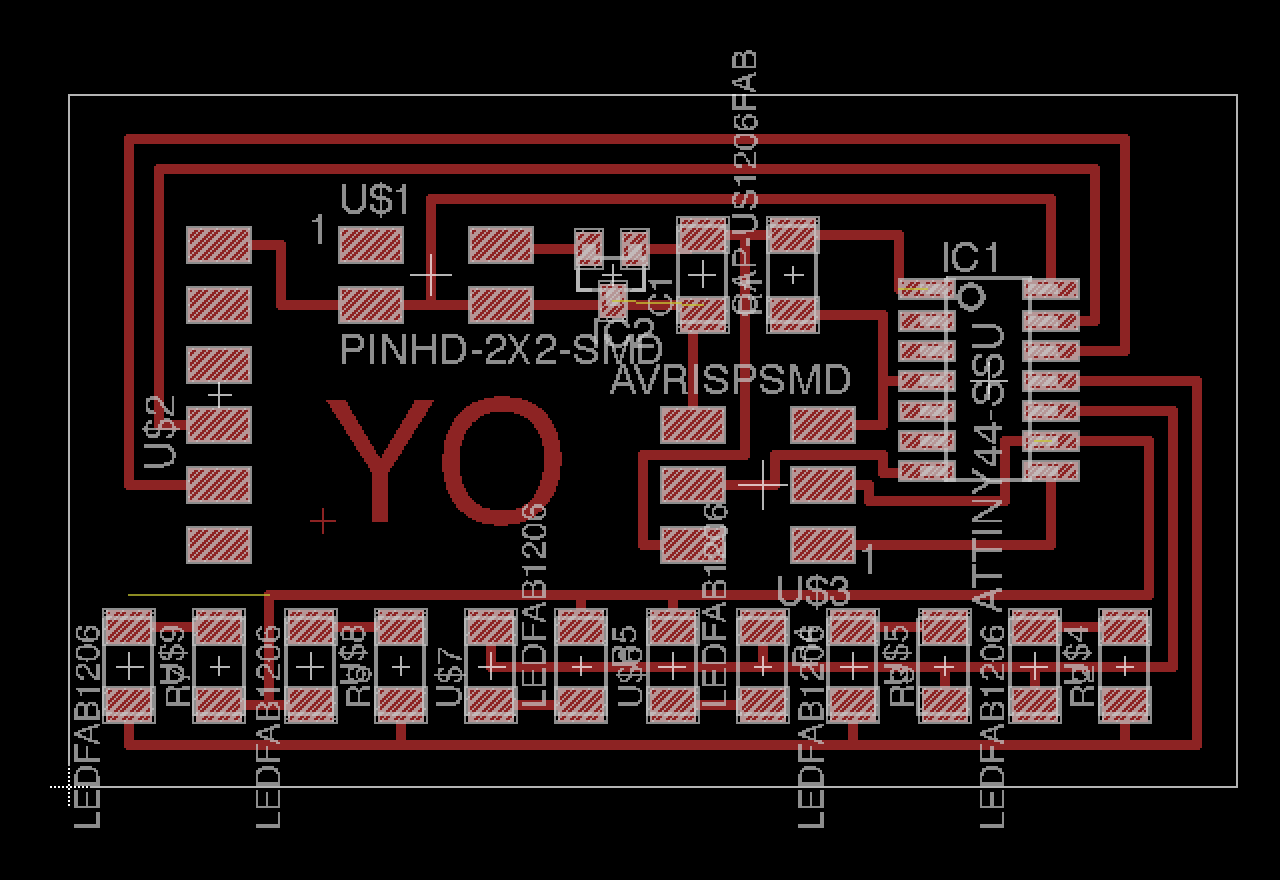This week was about output devices. Our assignment was to design, mill, stuff & program a board that uses an output device.
As preperation for my final project I’ve decided to build a led array board that’s controlled via a web interface.
WARNING: THIS BOARD HAD A DESIGN FLAW IN IT, DO NOT REPLICATE
Board


 Note: in retrospective I did not need need a resistor for each LED. I could have used just 3 resistors on the output pins.
Note: in retrospective I did not need need a resistor for each LED. I could have used just 3 resistors on the output pins.
Programming
 I borrowed from Neil’s hello.ftdi.44.echo code code and hello.aray.44 code. The main() function:
I borrowed from Neil’s hello.ftdi.44.echo code code and hello.aray.44 code. The main() function:
int main(void) {
static char chr;
// set clock divider to /1
CLKPR = (1 << CLKPCE);
CLKPR = (0 << CLKPS3) | (0 << CLKPS2) | (0 << CLKPS1) | (0 << CLKPS0);
// initialize output pins
set(serial_port, serial_pin_out);
output(serial_direction, serial_pin_out);
// main loop
while (1) {
get_char(&serial_pins, serial_pin_in, &chr);
switch(chr){
case 'a': flash(B,A, led_pressed_delay); break;
case 'b': flash(A,B, led_pressed_delay); break;
case 'c': flash(B,C, led_pressed_delay); break;
case 'd': flash(C,B, led_pressed_delay); break;
case 'e': flash(C,A, led_pressed_delay); break;
case 'f': flash(A,C, led_pressed_delay); break;
}
put_char(&serial_port, serial_pin_out, chr);
}
}full code - hello.array.serial.44.c
I improved my last week’s serial-to-socketio relay example so that I can also write to the serial port. The full code is at https://github.com/tomerweller/serial-to-socketio
Generally, it works. However, It’s visible that some LEDs that are not supposed to light up have some current flowing through them. Needs further debugging.